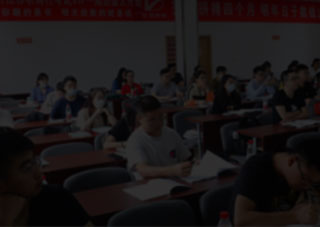【2019年中國建設銀行真題】
Jimmy Zhong is a Beijinger who speaks English with an American accent and wears a baseball cap. He recalls the heady days of life in Manhattan after finishing his degree in maths and computer science at Emory University in Atlanta, Georgia. By then he was already rich, having sold his first company—an online marketplace enabling students to sell class notes—for $40m. He was in NewYork to help build another internet startup which he had cofounded during his third year at university—a forum for students to buy tutorial help. The money was rolling in.
In early 2017, missing home, he went to spend the lunar new-year holiday in Beijing. He had heard about the opportunities there, about startup companies such as the bike-sharing firms OfO and Mobike that had grown into billion-dollar businesses in just a couple of years. "I realised, what am I doing in New York City? It's a complete waste of time."And so began his new ventures. One is a Beijing-based startup, Dora, that deals in self-service kiosks such as photo booths. Mr Zhong says it already has 300 employees and is worth $100m. He is now focusing on another one, IOST, based in Singapore, which is developing software involving block chain, the cryptographic technology behind bitcoin. China recognises the huge market potential for the underlying technology as an enabler of secure transactions. As in other digital domains, such as artificial intelligence, China is sparing no effort to establish itself as a world leader, so the government wants more people like Mr Zhong to return.
They are doing so in droves, many of them drawn back to China by a boom in tech-related business. In 2016 more than 430,000 people went back to China after finishing their studies, nearly 60% more than in 2011. China's official news agency, Xinhua, called this one of the biggest return flows of talent in any country's history: the "magnetic effect" of China's rise as a global power. About one-sixth of "sea turtles", as returnees are jokingly known in Chinese, take up IT-related work, according to a survey published last year by the Centre for China and Globalisation (CCG), a think-tank in Beijing, and Zhaopin, a job-search website. Most of the 150 or so Chinese companies listed on NASDAQ were launched by returnees.
Officials have also offered them generous allowances, housing, health care and other benefits to move back to China. Today's world not only has the West's American dream but the East's Chinese dream as well.
Officials say about 80% of Chinese students now return after finishing their studies, compared with less than one-third in 2006. Some, known as "seagulls", flit back and forth between East and West. But the trend is clear.
The success of China's plan to create world leaders in cutting-edge industries, known as "Made in China 2025", will need returnees. And indeed they make up nearly half of the "core talents" involved in developing artificial intelligence in China, according to ChinaHR.com, a recruitment website. Growing numbers of them have not only been educated in America but have also gained crucial experience there.
1. What is the main idea of this passage?( )A.America is no longer appealing to Chinese people.
B.Growing numbers of Chinese are heading back home after studying abroad.
C.China is the incubator of the startup companies.
D.China will take the lead in some cutting-edge industries.
答案:B
【東吳教育解析】本文先從一個典型的海歸Jimmy Zhong舉例說明在海外接受教育的中國人現在正在返回中國,參與2025中國制造項目,因此B選項(越來越多的中國人在國外接受教育之后返回中國)表述最為準確。
2. About Jimmy Zhong's ventures for startup companies, which one of the following is true?( )A.He didn't set up any companies until his graduation.
B.His first company was sold out because of mismanagement.
C.He is quite successful in doing his business.
D. When he came back to China, he based his two companies in Beijing.
答案:C
【東吳教育解析】根據題干,可以定位到文章第一段。這一段說了:By then he was already rich, having sold his first company—an online marketplace enabling students to sell class notes—for $40m,說的是他把公司賣了以后,賺了4000萬美元。因此C選項(他做生意十分成功)表述最為準確。
3. More people are coming back to China like Jimmy Zhong not because( ).
A.the tech industry is quite booming in China.
B.their overseas startup experience is not successful because of restrictions.
C.they can enjoy some benefits offered by Chinese government.
D.China is developing very fast and boasts a lot of opportunities.
答案:D
【東吳教育解析】根據文章第四段第一句:They are doing so in droves, many of them drawn back to China by a boom in tech-related business,可知大批海歸歸國是因為中國的科技企業發展非常迅速。因此D選項(中國發展非常快,有很多機遇)表述最為準確。
4. The underlined sentence "Today's world not only has the West's American dream but the East's Chinese dream as well." tells us that( ).
A.American dream is outdated.
B.opportunities in China will allow people to achieve their dreams there.
C.more people will come to China to pursue their Chinese dream.
D.the world is full of opportunities for people to make their dreams come true.
答案:B
【東吳教育解析】該句的意思是“今天的世界不僅有西方的美國夢,也有東方的中國夢”,意味著中國人可以實現自己的夢想。B選項表述最為準確。
5. According to this passage, which one of the following statements is false?( )A.The block chain technology has a huge market potential.
B.For people like Jimmy Zhong, they prefer to start up companies in China than in America.
C.The returnees will help China to achieve its "Made in 2025" plan.
D.Half of the returnees work in the artificial intelligence industry in China.
答案:D
【東吳教育解析】原文第三段:He is now focusing on another one, IOST, based in Singapore, which is developing software involving block chain, the cryptographic technology behind bitcoin. China recognises the huge market potential for the underlying technology as an enabler of secure transactions.(對應A選項)第二段:"I realised, what am I doing in New York City? It's a complete waste of time."(對應B選項)最后一段:The success of China's plan to create world leaders in cutting-edge industries, known as "Made in China 2025", will need returnees.(對應C選項)文章對于海歸就業的表述有:About one-sixth of "sea turtles", as returnees are jokingly known in Chinese, take up IT-related work,說的是有六分之一的海歸是在IT領域工作,并沒有說有一半海歸就職于人工智能行業。









